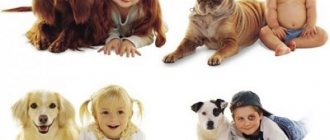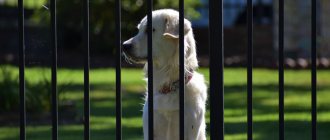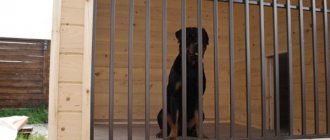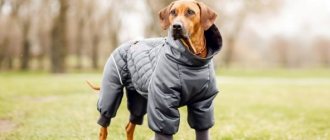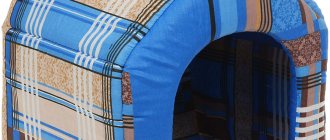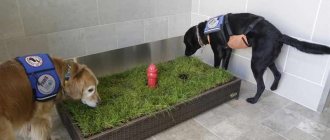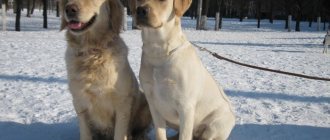Buying a four-legged pet is a very exciting and joyful event. The variety of breeds available is amazing, but sometimes leads to a dead end. Understanding which dog to choose, especially if you've never had one before, is not at all easy.
Each animal has its own advantages and disadvantages, so too impulsive decisions often end in separation. To avoid bad experiences, it is recommended to fix the minimum requirements for a future family member and evaluate your capabilities.
Why is it so important to choose the right dog breed?
First of all, it is important to understand that the presence of ANY animal limits the usual freedom. Before you decide to purchase, be sure to make sure that you are prepared for the following hardships:
- Time. Caring for a pet takes a lot of time and effort. In addition to combing wool and other important procedures, we must not forget about banal communication.
- Daily regime. You will have to walk your four-legged dog at least 2 times a day. If you are afraid of getting up early and walking in the rain, it is better to take a cat or ferret.
- Additional expenses. Soberly assess your capabilities. Some large dogs eat more than a person, while small ones often suffer from sensitive digestion and need special ready-made diets.
- Damage to property. Even the most intelligent and obedient representatives can play pranks in childhood. Chewed shoes, torn wallpaper and puddles on the floor are what you will have to put up with in the first months of adaptation.
- Frequent departures. Most four-legged animals have a very hard time with loneliness. It is recommended to take these pets with you on any trips out of town and to meetings with friends.
After acquiring a four-legged family member, you will have to take on certain obligations to raise it, so you should not give an animal as a gift without the knowledge of the recipient. If the above difficulties do not scare you, feel free to move on to the next stage.
Test
What phrase would you use to describe your future dog?
- Faithful friend and family favorite (20);
- Energetic and cheerful (30);
- Just a dog (20);
- Cute dog (40).
Do you play sports?
- Regular jogging, gym exercises, cycling (30);
- Sport for me is going to the refrigerator (40);
- I attend training sessions from time to time (20);
- I love parties and movies (10).
How would you like to spend your free time with your dog?
- Lie on the couch and watch your favorite TV series (10);
- Engage in training and active games (30);
- Take a walk together on the street (20);
- The dog isn't going anywhere, I'd rather spend time with my friends (40).
Will you buy suits and shoes for your pet?
- If the dog is smooth-haired, then why not (20);
- Wool will keep you warm (30);
- Of course, because now there is such a choice of clothes and jewelry for dogs (10);
- Let it harden! (40).
Choose a name for your dog.
- Dwarf (10).
- Rocky (30);
- Pirate (40);
- Simba (20);
Which collar will you choose for your dog?
- Simple plain or harness (20);
- Pink with strap (10);
- Chain (40);
- Black or brown (30).
Where will your dog spend the night?
- On a soft rug or in my room (20);
- Dogs must have a kennel (30);
- With me (10);
- Where she likes it, most importantly, not on the bed (30).
Does my dog need to undergo training from a specialist?
- Why waste time and money on this, as they say, “life will teach you” (40);
- Of course, this will be a well-mannered dog that follows commands (30);
- Let him learn basic commands (20);
- Why bother this cute creature (10).
What, in your opinion, should be the main thing in a dog?
- Mind and activity (30);
- Kindness and love for children (20);
- Beauty and Charm (10);
- To bark at strangers and guard the house (40).
“They gave me a dog!”: six main rules for pet owners
Floor
One of the important selection criteria, in addition to the breed of the dog, is its gender. Despite their similar appearance, girls and boys have different characters and behavioral characteristics.
Males are good for participating in canine sports. They are stronger, larger and more active, but are less trainable. Learning difficulties arise from an innate desire to dominate.
Also, the disadvantages include a strong sex drive. Males often run after females in heat, breaking off the leash or getting into fights with potential rivals.
Females are suitable for breeding puppies. They are graceful, affectionate and strongly attached to their owner. Thanks to their calm disposition and lack of leadership habits, it is easier to teach them commands and rules of behavior.
The only serious drawback of bitches is estrus. Periodic hormonal surges negatively affect obedience and increase the risk of infection.
If you do not plan to become a professional breeder, then be sure to sterilize your pet immediately after puberty. A timely operation will help get rid of mood swings and reduce the likelihood of cancer in the future.
Details. What to look for when choosing?
The character of the person who is the future owner of the dog
To choose a dog breed, you need to evaluate yourself as a person. Whether you are an athlete or constantly sit at home, the choice of breed will depend on this. There are several breeds of dogs that only people with a strong and strong-willed character can handle. Today, breeds of decorative dogs are popular, but they are distinguished by manifestations of jealousy towards their owner, and therefore require a lot of attention and time.
If the future dog owner is athletic, active, rides a bike, runs or engages in other outdoor sports, then he should take a closer look at the same active, active breeds of dogs, for example, husky, Irish setter or greyhand greyhound.
If the owner is calm and balanced, then pug or retweeter dogs will suit him.
If the owner has a strong-willed character, then the Rottweiler, Doberman or German Shepherd breeds will suit him.
If you want to buy a dog of a decorative breed, you need to take into account its character. They are stubborn, sensitive and nervous, therefore they require increased attention to their person.
Based on age, it is, of course, better to take a small puppy rather than an adult. Although you will have to tinker with vaccinations and training, you will be confident in the character of your dog.
Characteristics of different breeds
A dog is a full-fledged member of the family. Therefore, when choosing a puppy, first of all you should pay attention to their character and behavior, and not to their appearance. The most intelligent and quick-witted dogs that are easy to train include collies, poodles, German and Belgian shepherds, Dobermans, Rottweilers, Labradors, schnauzers, spaniels, and cocker spaniels.
An important point in choosing a pet is also its gender. In each case there are both disadvantages and advantages. If you choose a female, changes in her behavior during the period of estrus are possible, and it is also worth thinking about possible offspring and whether you need them. If a male is chosen, his behavior is usually more stable, and they are also more independent and self-reliant.
Every dog needs care, especially its coat. Some breeds require daily brushing. Think about whether you are ready to constantly collect wool throughout the apartment, and whether all family members are allergic to this wool. In this regard, poodles are the most non-allergenic.
Gender of the dog
The choice you make is important as care for them varies.
Caring for females is characterized by their ease of perception of educational procedures, they are more obedient, and are also used for breeding puppies. Attraction to male dogs occurs no more than 2 times a year. Females are much closer emotionally to their owner than males. The disadvantages of females are the possibility of unplanned pregnancy, as well as inconvenience during the period of estrus. Complications during pregnancy are also possible. When pregnancy occurs, the female needs increased attention from her owner. If you are not going to breed puppies, then the female should be sterilized.
Caring for male dogs is easier. Emotionally, male dogs are more energetic, assertive, and there are frequent outbursts of uncontrollable joy. They can give owners constant pleasant emotions, not even allowing them to rest. The positive qualities of male dogs include their high activity, as well as the absence of restrictions when participating in competitions or exhibitions. The disadvantages of males are their constant interest in females. Males have a strong desire to occupy leading positions and always dominate. With proper training and increased attention to education, males show impossible results.
Age
Unless you are an experienced breeder, do not adopt an adult dog. Your best option would be to buy a puppy that you can raise yourself. With your help, the puppy should learn proper behavior and adapt to the living conditions in your family. When an adult dog appears in your family, doing all this is quite problematic, since the dog has already developed a character and is accustomed to certain living conditions. Changing an adult dog to suit yourself is a very difficult task, and sometimes even impossible.
NOTE! The only advantage of purchasing an adult dog is the absence of problems associated with spoiled things.
Choosing a dog for an apartment
People get dogs for different purposes. Some people want to make a friend, others a sports partner or a fishing and hunting companion. But rarely do people think about the dog’s comfort in terms of its stay in the apartment. Still, apartments are not suitable for the life of a large dog; dogs of medium and small breeds are better suited for these purposes. Of the medium-sized pets for apartments, the most popular are poodles, English cocker spaniels, pugs, boxers, Scotch terriers and others. Of the small breeds that are most popular today, the most often chosen are Pekingese, Toy Terriers and others. They are an addition to the wearers' appearance.
Dogs can be smooth-haired or long-haired. Of course, smooth-haired dog breeds are more acceptable for keeping in an apartment, since they shed less and require less grooming.
Guard dog
Often people consider the only purpose of owning a dog to be to protect the local area. In fact, this is true, since thieves are more often stopped by the presence of a menacing dog behind the fence than by installed alarms and/or CCTV cameras.
For quite a long time, the leaders in protection among dog breeds have been shepherds and fighting dogs, which include mastiffs, boxers, and Rottweilers.
REFERENCE! In addition to the listed breeds, other breeds are also suitable for home guarding, for example, Shar-Peis and bulldogs become excellent apartment guards.
Hunting dog
Breeds of dogs for hunting together with their owner are Labradors, retrievers, huskies, Dalmatians, terriers and spaniels, bassethounders and others. Hunting dogs should become a friend, companion and family member for their owner. They are also well suited for families with many small children. Hunting dogs can be brought into an apartment or into your own home.
Caring dogs
The dog breeds most suitable as a caregiver for their owner are Labradors and Retrievers. These breeds are unique in their kind, the dogs become an assistant and friend for the owner, you can even talk to them - they know how to listen well.
Decorative dogs
All kinds of decorative dog breeds are popular today, and their number is increasing every year. Often girls or women buy them, carry them under their arms, dress them in a wide variety of outfits and do their hair, caring for them as if they were their children. These dogs are affectionate, but need proper training. They also require constant attention and careful care.
Age
The age of the animal is also very important. The most optimal is 2-3 months. At this point, the puppies begin to feed themselves and receive all the necessary vaccinations. Thanks to this, they can more easily tolerate separation from their mother and become less vulnerable to infections.
A later age is recommended for large dogs, as they take longer to develop and often remain puppies for up to 2 or even 3 years. There is no need to rush if you plan to take your pet to dog shows or introduce him to breeding. Compliance with the standard and championship makings are difficult to track until 6-9 months, so a puppy adopted too early may not meet your expectations in the future.
First dog in life
If you have never had a dog, take the selection of the breed with the utmost seriousness. If you have no experience, you should avoid adult animals and pets with pronounced dominant behavior. Due to their established habits and constant attempts to challenge human authority, they are very difficult to train without the help of a dog handler.
The best option is puppies that are already toilet trained and unquestioningly obey their owners. These animals include poodles, golden retrievers and Labradors.
Think about why you need a dog
It will be very helpful to understand what you expect from your dog. Do you just want company or do you need a watchdog? Do you want a little buddy to curl up in your lap or a big buddy to keep you company on your runs? Some pet owners are looking for a nanny dog that can protect children while they play, while others are looking for a new best friend for their family. Being honest with yourself about why you need a dog and what you and your family want to get out of it will be a big step toward making it easier to find the right pet for your family.
Character, temperament and activity
Don’t forget about your own character, as well as your usual way of life. The moment of changing your daily routine can be mitigated if you choose a pet with a similar temperament and activity level.
Lovers of peace and tranquility are advised to pay attention to the phlegmatic English bulldog or chow-chow, and those who love sports and frequent walks are advised to pay attention to energetic terriers or huskies.
For workaholics, basset hounds or sharpeis are more suitable, as they can easily tolerate loneliness, but it is better to immediately refuse to buy a lapdog, since a small amount of attention has an extremely negative impact on its health.
Small dog breeds for children and apartments
Small dogs are not suitable for all children. They are easily injured and often get sick, which is due to the fragility of the bones and the characteristics of any decorative breed. Despite this, small dogs are ideal for apartment conditions. They are easily litter trained and do not need long walks.
Yorkshire Terrier
Despite its modest size, the Yorkie is a typical terrier. He is energetic, resilient and very courageous. Due to its innate curiosity, the Yorkie is often distracted during walks, but never moves too far away from the owner, preferring to keep him in his field of vision.
Dachshund
Dachshunds are not suitable for melancholy owners, but they get along well with people who prefer an active lifestyle. These four-legged animals are known for their independence and stubbornness, so it is better to train them together with an adult.
Shih Tzu
Another great dog for children is the Shih Tzu. She is not cowardly, has good self-control and does not worry about trifles. The only thing that can throw her off balance is long-term loneliness.
Pekingese
Fluffy Pekingese are peaceful towards any pets, but they are more selective towards children. Due to the low pain threshold and love for a peaceful environment, they are suitable exclusively for teenagers and preschoolers who know how to restrain their emotions during hugs.
Miniature Schnauzer
These small four-legged animals cope well with the role of protector and hunter. Despite their rather serious nature, miniature schnauzers are very good-natured around the family. They show a particularly caring attitude towards children, with whom they can have a lot of fun while playing.
Pomeranian Spitz
Pomeranians become so attached to their owners that they prefer to share the same bed with them and even take a shower. Despite their friendliness, they are quite capable of standing up for themselves and do not accept cruel treatment at all. For this reason, Spitz, like Pugs, are more suitable for conscientious children.
Papillon
The Papillon is the only small dog for children to be included in the top ten smartest breeds. Despite his acute intolerance to loneliness, this four-legged animal never stoops to damaging furniture and constantly looks at the world through rose-colored glasses.
Pug
Pugs are friendly to all people, regardless of their age and the fact of their acquaintance. During games, it is important to take into account the weak feature of the breed - large and bulging eyes. They are easily injured and prone to falling out.
By living space
If the previous criteria have not sufficiently narrowed the possible sample and you still do not understand how to choose a puppy breed, then it’s time to take into account the size of your living space. They will help eliminate some options based on the size of the future pet.
For a small apartment
Small studio apartments are suitable for miniature dogs. Yorkshire Terriers, Japanese Chins and Pekingese take up little space and easily fit into even the most modest conditions.
For a large apartment
A large apartment consisting of three or more rooms is suitable not only for miniature dogs, but also for medium-sized and large dogs with a calm temperament. The latter include Great Danes, Newfoundlands and St. Bernards.
For a private home
If you have a private house with a separate territory, the choice is unlimited. Such conditions are recommended for the largest representatives (mastiffs, wolfhounds, Leonbergers) and energizer dogs (terriers, huskies, aussies).
Please note that the pet must live either with its owners or in an insulated enclosure. Keeping in the open air or on a chain is unacceptable.
General points
Before you start choosing a dog breed, you need to find out the following points for yourself in order to understand whether you need a dog in principle:
- Money is an important point, since a dog needs finances for a full-fledged lifestyle.
- Time is necessary for a dog of any breed. Pets need daily care and attention from their owners. If you cannot give this, the dog will begin to waste away before your eyes.
- Willingness not to worry about things spoiled by puppies. Babies chew on everything that appears in their field of vision, as their gums itch when teething.
- The goal is an important point. You need to determine why you need a dog. For hunting, home guarding, breeding purebred puppies, or just to act as a friend. This can be used as a starting point when choosing a breed.
- Changes in your daily routine. You need to walk your dog several times a day, and for quite a long time. You should be prepared to spend a lot of time outside working with your dog.
- Confidence that all members of your family are not allergic to dog hair.
- The place of residence where you plan to bring the dog. Will it be an apartment or your own house with a plot. For example, it is inappropriate to have a shepherd in a small apartment; it will simply be cramped.
- Planning a backup plan for the time of your departure.
IMPORTANT! When choosing a breed, you need to carefully consider all the points described and understand for yourself that there should be only one dog owner. Otherwise, the dog will not receive the required education and will not be able to understand who to obey. In the end, nothing good will come from it.
If you decide for yourself that a dog is necessary, you should not buy it right away. Now you need to think about which breed to choose. In this case, the opinion of each family member must be taken into account.
For families
Do not forget that the animal must meet the expectations of all family members. If the main owner of a four-legged animal is a child or an elderly person, then much more requirements should be placed on him.
With kids
Children love to play pranks and do not always restrain their emotions, so build on your child’s activity and manners. The most patient pets are nanny dogs. These include Scottish Sheepdogs (Collies), Golden Retrievers and Labradors. It is almost impossible to unbalance such a dog, since he is wholeheartedly devoted to his owners and is devoid of aggression towards humans.
Representatives of miniature breeds are best taken for conscientious preschoolers and teenagers. Children under 3 years old can accidentally harm a pet by not calculating the strength of their hugs. Possible trauma also works in the opposite direction. A good-natured, but too large dog can easily crush a child during joint games.
For pensioners
Some retirees lead more active lifestyles than younger people. In their case, the choice of pet is practically unlimited, but most older people are still less mobile.
For this reason, they should not have animals that are too large, difficult to keep on a leash, or dogs that require frequent and long walks. The best option is a small decorative dog that is easily litter trained and can easily survive several weekends at home.
Another important point is the complexity of care. A pet for a pensioner should be as unpretentious and not picky as possible, so you should not spend money on elite show-class puppies. The easiest way is to stick to the pet class or take a mongrel.
Pedigree dogs versus mixed breed dogs
Most shelters are easy to find purebred dogs in need of love and a home, but you are more likely to find a huge selection of mixed breed animals. You might think that the temperament of a mixed breed dog is harder to predict, but if you know what breeds make up the mix, it's not that difficult. Mixed breeds usually have a balance of the predominant traits of their parents. Often their character is somewhere between the pronounced extremes of purebred dogs. Also, according to the Humane Society of the United States, mixed breed dogs are less susceptible to the genetic defects that sometimes result from overbreeding their purebred counterparts. If you are considering adopting a shelter pet, talk to a shelter employee or volunteer about the personality traits you are looking for. He or she will help you choose the best option.
After looking at all these questions, you might think that finding a dog with the right personality is almost as difficult as finding your soulmate. But this decision needs to be taken seriously. After all, your dog will become an integral part of your life for the next 10 to 15 years. You need to make sure you are a good fit for each other.
Short-haired or long-haired
The difficulty of grooming depends greatly on the type of coat. Long-haired and fluffy four-legged animals look very elegant, but their hairs constantly get tangled and catch dirt. This problem is less common in short-haired animals.
If you have allergies or a strong love of cleanliness, it is recommended to pay attention to the severity of shedding. The thicker the undercoat, the more fluff there will be. The overall length of the coat does not affect this process, and among long-haired dogs you can often find hypoallergenic ones.
By breed group
The last important point is the purpose of the acquisition. If you still don’t know how to decide on the breed of dog, then just think about what you are getting it for: hunting, guarding, or just for fun.
Hunters
These four-legged animals were bred to hunt together with humans. They are not aggressive, cheerful and very hardy. All hunting dogs are divided into 5 large groups:
- greyhounds (Salukis, greyhounds);
- hounds (beagles, basset hounds);
- burrowers (dachshunds, terriers);
- gundogs (spaniels, retrievers);
- likes.
If you are engaged in professional hunting, start from the type of prey and the desired method of catching it. In other cases, the animal will need to be provided with activity comparable in activity: regular jogging or exercise on apparatus.
Security guards
Guard dogs have a developed guarding instinct and an innate distrust of strangers. They are brought in to protect property and as personal bodyguards.
In addition to large dogs like the Caucasian Shepherd and Moscow Watchdog, this group also includes very small representatives such as Boston Terriers and Schipperkes. Due to their modest size, these four-legged animals are not able to seriously repel intruders, but they can warn you of danger or scare away a thief with their loud barking.
Companions and decorative
The last group includes dogs bred artificially and used exclusively as pets. Due to their small size and good-natured nature, they are not suitable for serious work, but they get along well with people and know how to listen to them. Among the most popular representatives are the following:
- all varieties of lap dogs;
- poodles;
- small molossoids (French bulldogs, pugs, Boston terriers);
- Pekingese and Japanese Chins;
- Papillons, Russian Toys and Prague Raters;
- Cavalier King Charles and King Charles Spaniels;
- chihuahua;
- Shih Tzu;
- Chinese Crested.
The main disadvantage of these four-legged animals is their acute intolerance to loneliness. If you often go on business trips or stay late at work, then it is better to abandon such a gentle pet in favor of a more self-sufficient one.
Which dog should I buy for my child?
Having a four-legged family member has many advantages. Thanks to regular communication with animals, children quickly make new acquaintances and feel more relaxed in society.
The need for care also plays a significant role. Despite the fact that most of the responsibilities fall on the parents, kids can also feed, brush and walk their pet. This increases their discipline and sense of responsibility.
When choosing a new pet, it is important to consider the following factors:
- age of the future owner;
- footage of living space;
- size and sex of the animal;
- features of care;
- presence of an allergic reaction to wool.
Please note that the final decision must be made jointly. Only a teenager can completely delegate the care of a dog, but even here there will be some restrictions. For this reason, the puppy chosen must meet the wishes of all family members.
Age: infant, preschooler or teenager
When choosing a dog for a child, be guided by his age. Existing restrictions can be divided into 3 categories:
- Baby. Babies under one year old are unlikely to demand a pet from you. In this case, we are talking about your own desire. The safest option is large breeds that are good-natured and nanny dogs.
- Preschooler. If your preschooler is no more than 3 years old, then teaching him how to properly handle animals is quite problematic. At a later age, he can be explained how to communicate with a pet, and even assigned to some responsibilities. In the first case, focus on options for a baby, and in the second, on breeds that do not require complex care.
- Teenager. During adolescence, children are as independent as possible. If you are confident in your child’s responsibility, let him make his own choice. In this case, any dog listed below will do.
Please note that preschoolers should only interact with their pets in the presence of an adult. By carelessness, they can injure a small dog or accidentally get injured by a large four-legged animal during play.
For a country house or apartment
The best dog breeds for home and children are guard, herding and hunting dogs. The first will guard your site, the second will keep an eye on their little owners, and the third will be able to independently satisfy their need for activity.
An apartment imposes more restrictions. A small living space is not suitable for large and active dogs. Small dogs, as well as calm couch potato pets, are adapted to life in such conditions.
Pet size
The size of the animal affects not only the conditions of its keeping, but also its character. Small dogs are more capricious and jealous. They do not tolerate rough treatment and can bite a naughty owner without warning.
Large dogs are difficult to injure, so they are always more patient than small ones. The only caveat is the difficulty of walking. A large pet is a reliable guard, but not every adult is able to keep it on a leash, let alone children.
Easy to care and feed
A dog for a child should be as easy to care for as possible. Otherwise, almost all responsibilities will fall on you. It is recommended to avoid long-haired representatives and breeds with problem ears or eyes.
Separately, it is worth noting feeding. It is possible to explain to a child the dangers of feeding only at a conscious age, so you should not take a four-legged pet with allergies or a tendency to be overweight.
Male or female
We must not forget about gender. Males are more dominant and less flexible. They often get into fights and react very violently to bitches in heat. Because of this, it is problematic to walk with them unaccompanied by adults.
Bitches are more obedient and often perceive their small owners as their own puppies. Difficulties with walking arise only during heat, but this can be avoided by sterilization.
Despite gender differences, not all animals conform to them. There are always exceptions, so you should additionally focus on the character traits inherent in a particular breed. “Energizer dogs” are suitable for active kids, and phlegmatic dogs are suitable for calm kids.
Having an allergy to wool
A dog for a child with a hair allergy should either be hairless, rarely shed, or have a special hair structure. Please note that these features do not exclude the occurrence of a reaction to other allergens: saliva, urine, sweat, secretions of the sebaceous glands, dandruff and dead skin particles. For this reason, doctors recommend that allergy sufferers not buy pets with excessive salivation.
To be safe, try introducing your baby to the puppy before purchasing. If staying in the same room for 1-2 hours does not cause a negative reaction, then with a high probability it will not occur in the future.

